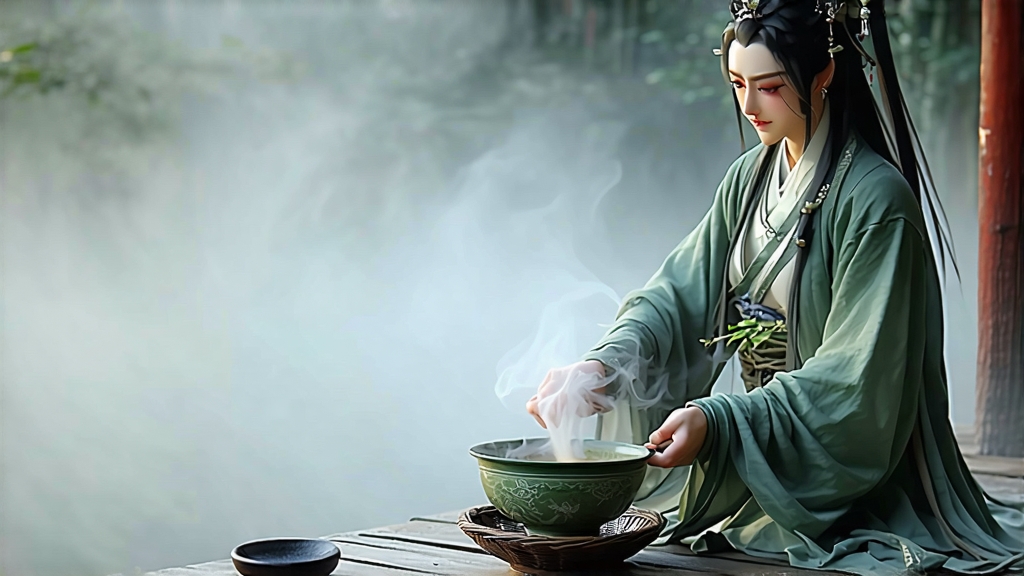
High on the northern shoulder of the sacred Mt. Meng, where Sichuan’s mist never quite lifts and the first spring rays slide like silk across the terraced slopes, a tea has been quietly perfecting its golden character for twelve centuries. International drinkers may speak eloquently of Longjing or Da Hong Pao, yet inside China the tiny, down-covered buds known as Meng Ding Huang Ya—“Yellow Buds from the Summit of Meng”—are whispered about as the emperor’s secret cup, the tea that taught the nation how to taste restraint. This essay invites you to travel from Tang-dynasty stone inscriptions to a modern gaiwan, tracing the history, craft, and sensory code of one of the world’s rarest yellow teas.
-
A leaf born in poetry
The earliest record appears in 825 CE, when the Tang governor of Ya Prefecture sent “one hundred scrolls of Meng Mountain buds” to the capital. By Song times the buds were pressed into tiny cakes, stamped with the imperial dragon, and carried along the Min River to Kaifeng. The Ming abolished compressed tribute tea, but the Qing Qianlong Emperor so adored the fresh yellow liquor that he exempted Meng Ding monks from land tax in exchange for 400 jin each spring. American botanist William Purdom, exploring western Sichuan in 1909, noted in his diary “a pale yellow infusion of haunting sweetness served by Buddhist novices,” the first Western mention of the variety. Thus, for a millennium Meng Ding Huang Ya has existed at the intersection of poetry, politics, and pilgrimage. -
Micro-terroir above the clouds
Mt. Meng rises to 1,456 m where the Sichuan basin collides with the Tibetan Plateau. The plantation zone sits between 800–1,400 m, wrapped in 220 foggy days per year. The soil is a crumbly yellow loam rich in quartz and organic matter, pH 4.6–5.2, perfectly acidic for tea. Night temperatures can drop 10 °C within an hour, forcing the plant to convert starch into soluble sugars and amino acids—especially L-theanine, which later translates into the tea’s famous “sweet broth” texture. Only the local small-leaf landrace, Camellia sinensis var. microphylla ‘Meng Ding’, survives on these narrow terraces; its buds oxidize more slowly than those of lowland cousins, giving the master an extra margin of control during the critical yellowing phase. -
The five breaths of craftsmanship
Yellow tea is often misunderstood as “green tea gone wrong,” yet its manufacture is a deliberate choreography of moisture, heat, and time. Meng Ding Huang Ya undergoes five breaths:
a. Pluck: Dawn on the Qingming window (around 5 April) when each bud weighs 0.1 g and still wears its winter down. Two strict rules—no fingernails (to avoid bruise oxidation) and no plastic baskets (to prevent dew condensation).
b. Sha Qing (kill-green): 280 °C bamboo-roasted wok, 4 min, 50 revolutions per minute. The high temperature denatures polyphenol oxidase yet leaves a 5 % residual enzyme activity crucial for later yellowing.
c. Men Huang (sealed yellowing): The still-warm leaves are wrapped in three layers—fresh bamboo skin, wet linen, and finally kraft paper—then stacked in a pine-wood cabinet at 32 °C and 78 % RH for 48 h. During this breath the leaf re-absorbs its own evaporated juices, chlorophyll degrades into pheophytin, and a faint maillard note of toasted rice appears.
d. Low-temperature drying: Charcoal embers at 60 °C for three hours, hand-tossed every ten minutes to achieve 5 % final moisture.
e. Post-rest: The finished tea is left for seven days in unglazed clay jars so that trapped heat and aromatic aldehydes can marry, a step locals call “letting the yellow settle.”
- From tribute to rarity
In 2007 the Chinese government listed Meng Ding Huang Ya as a National Intangible Cultural Heritage, but fame paradoxically shrank supply. Only 180 mu (12 hectares) of pre-Ming terraces are deemed authentic; annual yield fluctuates between